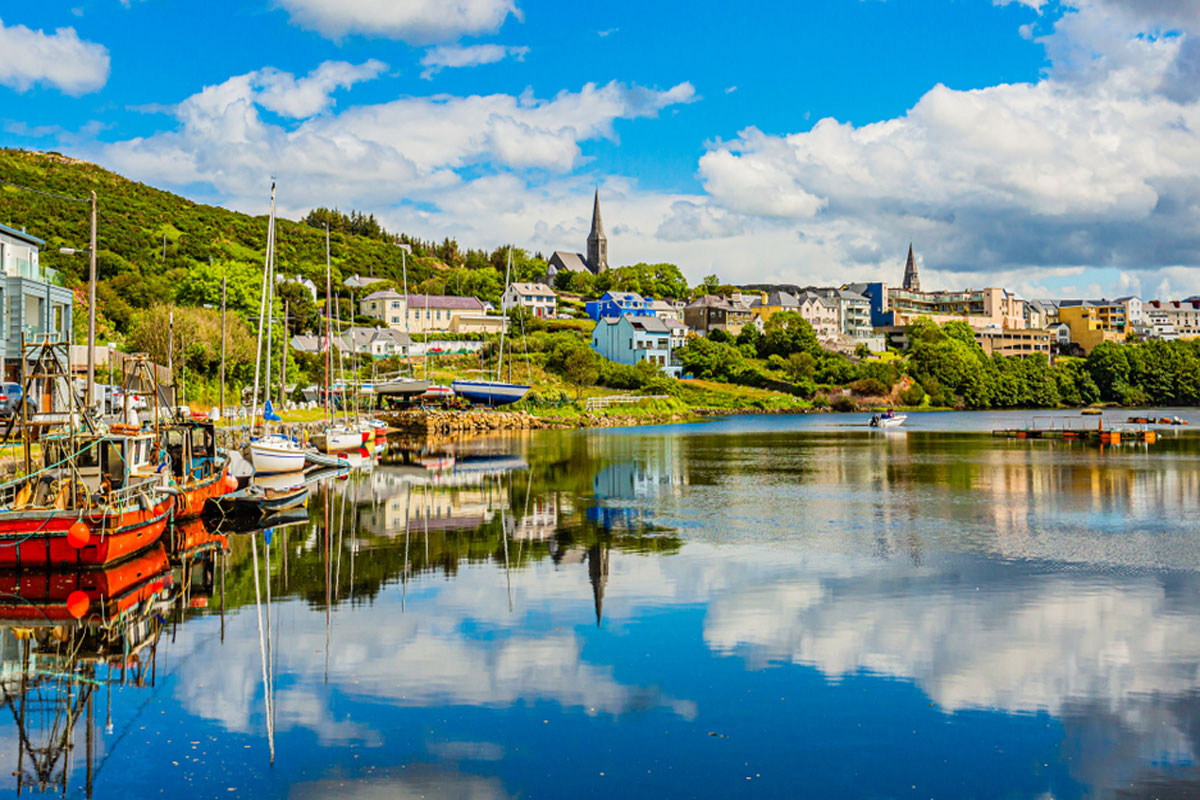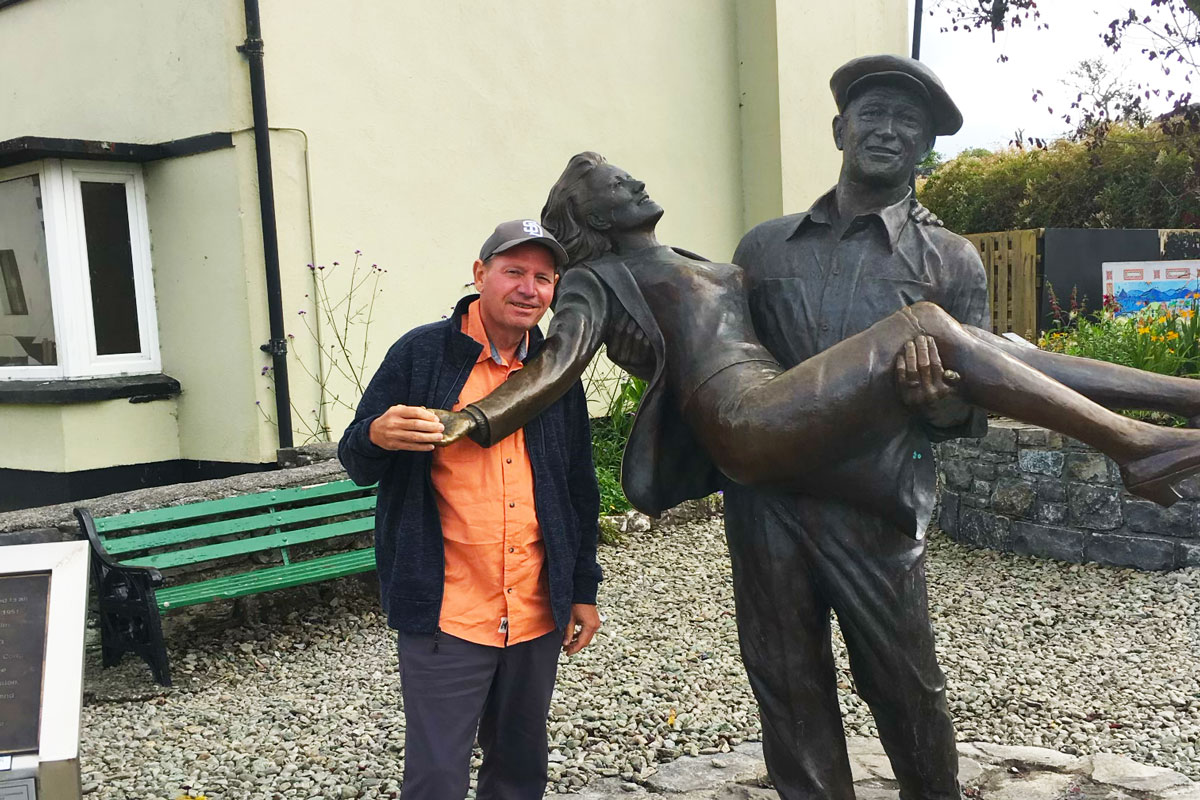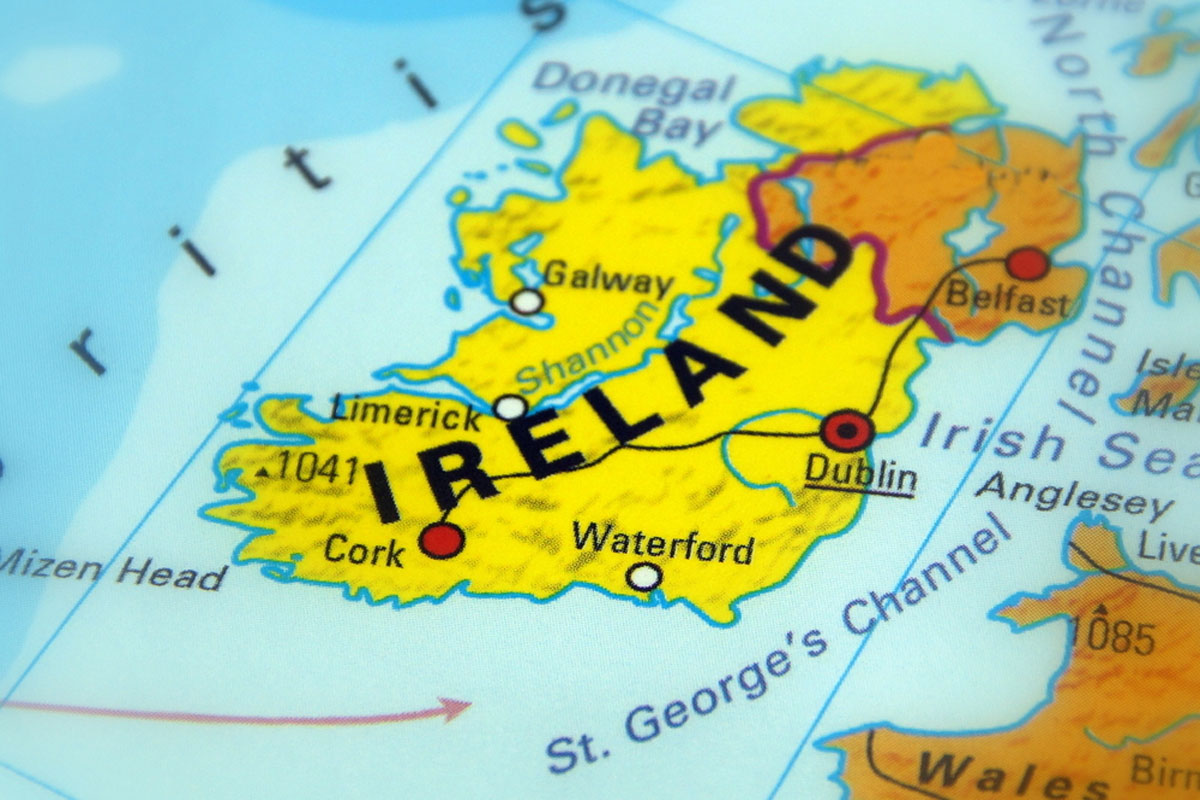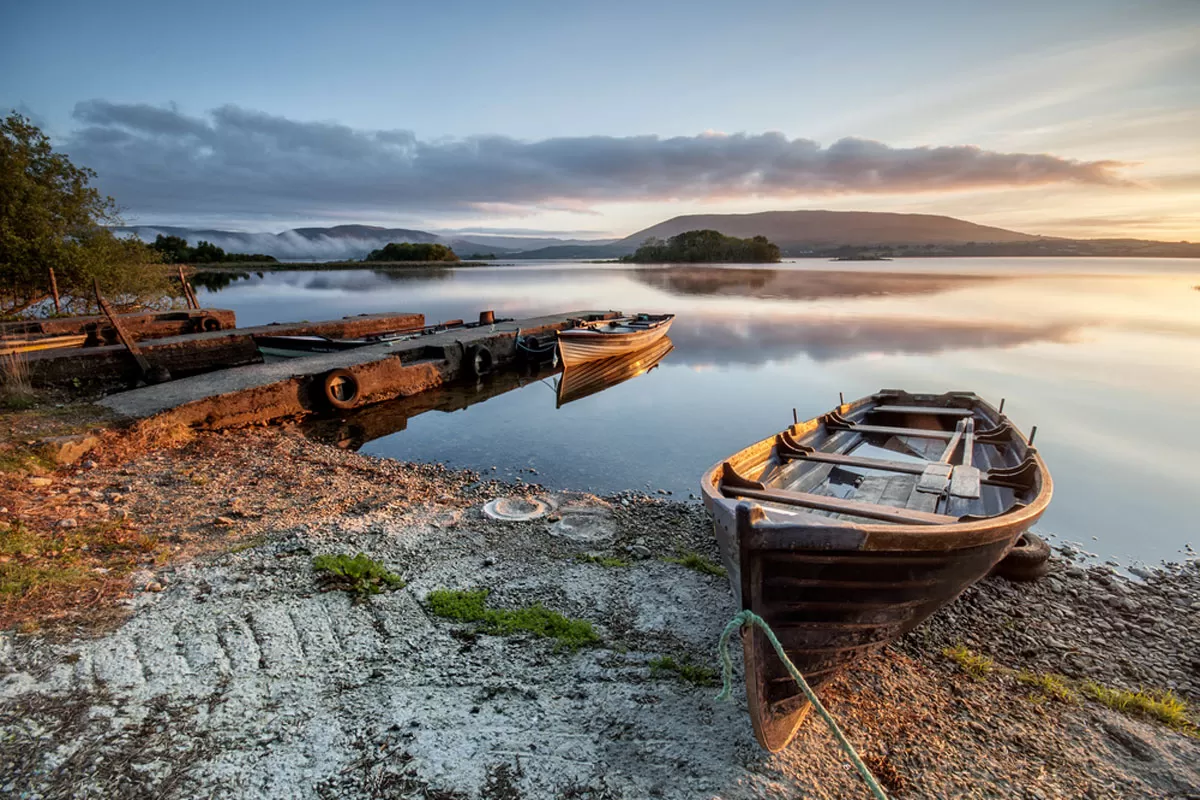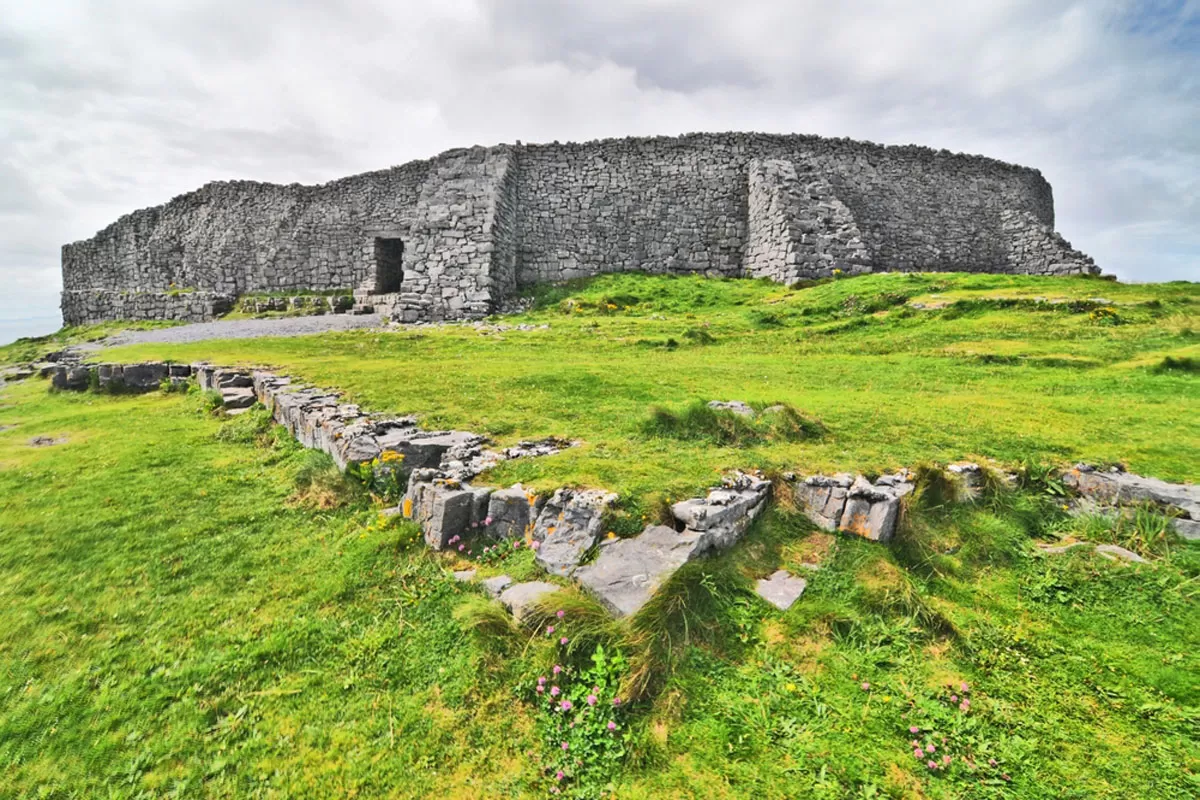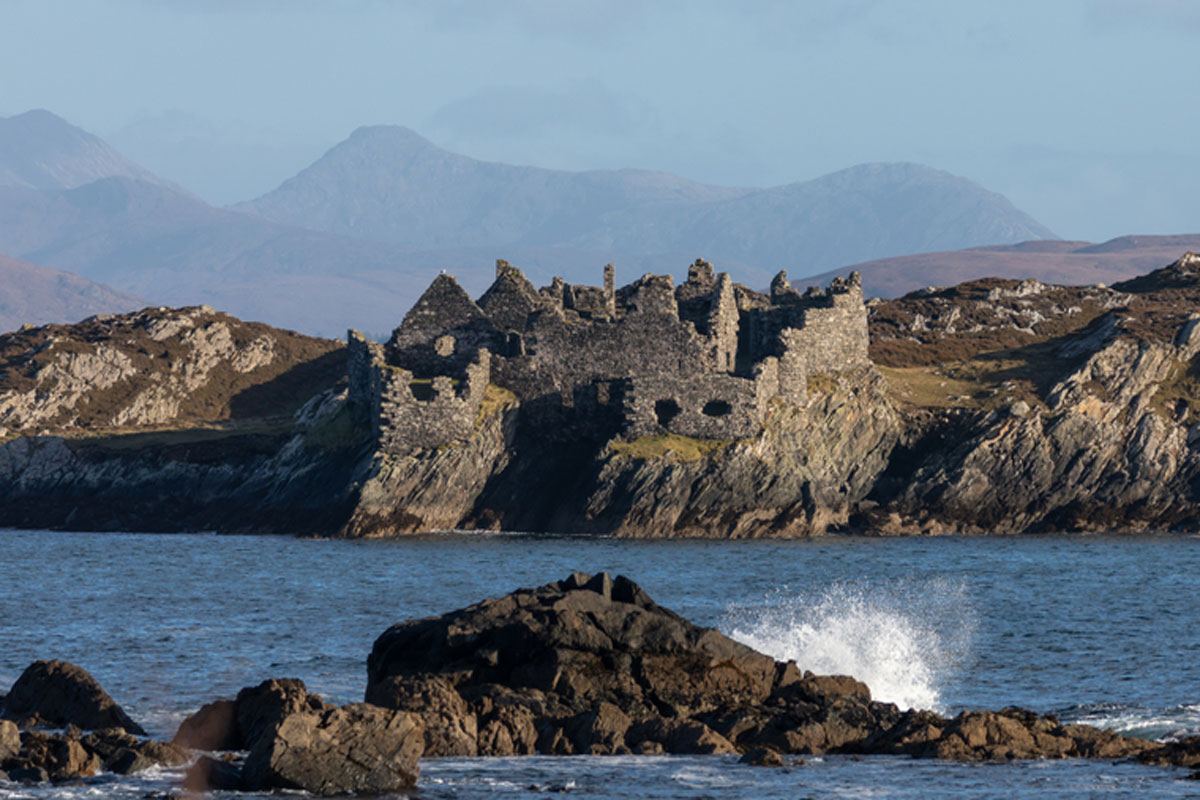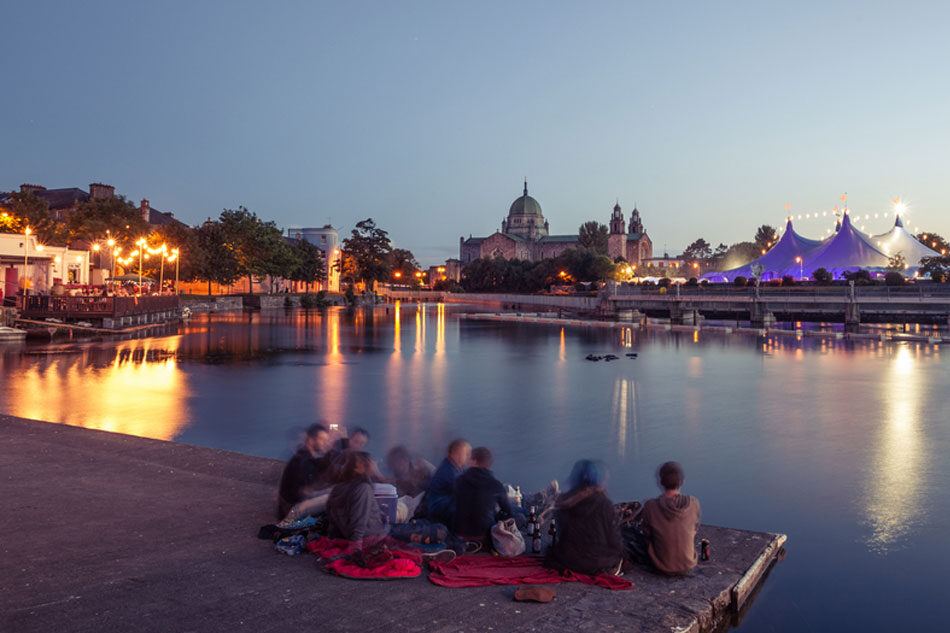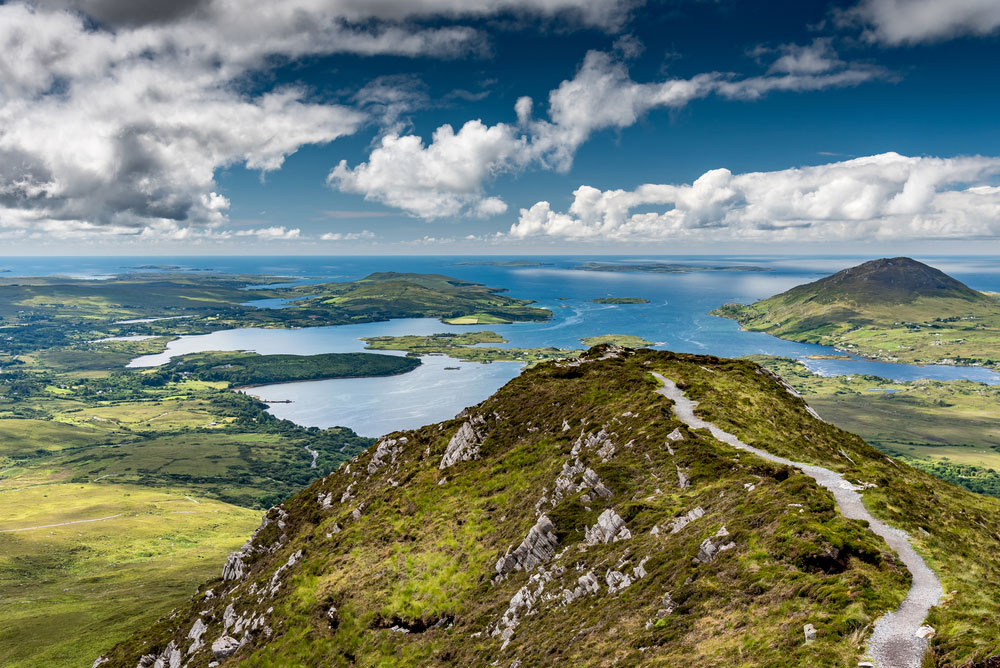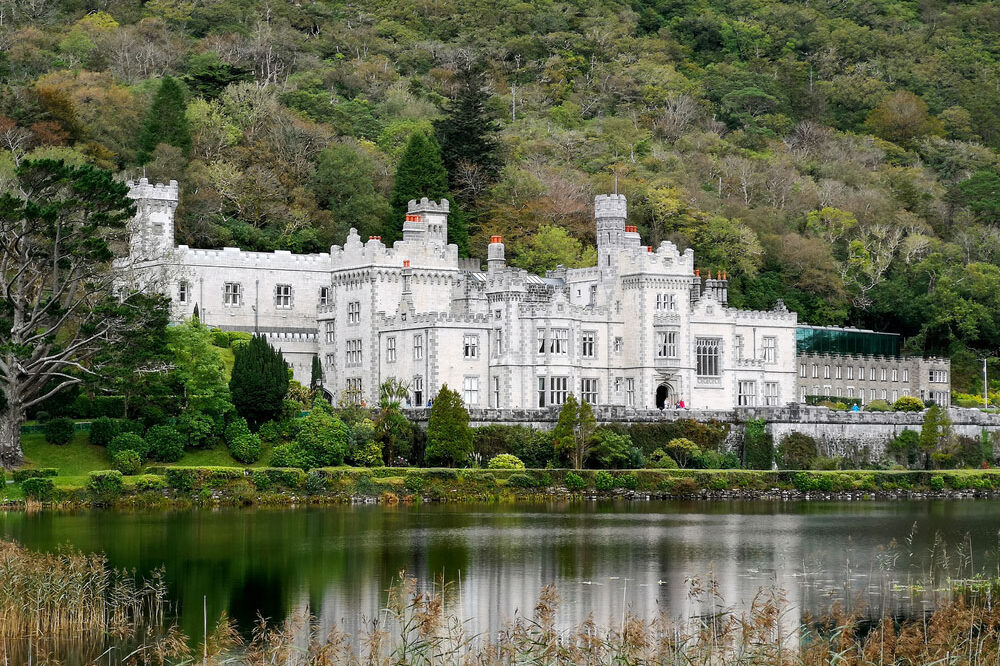An Introduction to Clifden
Nestled amidst the breathtaking landscapes of County Galway, Clifden is often hailed as the “Capital of Connemara.” This charming town, with its rich history, vibrant culture, and stunning surroundings, serves as a gateway to one of Ireland’s most picturesque regions. Known for its unspoiled beauty, Clifden is a haven for nature lovers, history buffs, and anyone seeking a quintessential Irish experience.
Clifden’s story begins in the early 19th century, when it was founded by John D’Arcy, a visionary landlord who sought to develop the region’s economy. The town’s strategic location, set between the Twelve Bens mountain range and the Atlantic Ocean, made it an ideal hub for trade and agriculture. Today, this legacy of growth and community spirit is still evident in Clifden’s bustling streets, lined with colorful shopfronts, cozy pubs, and inviting cafes.
Visitors to Clifden are greeted with an array of attractions and activities. From exploring the town’s historical landmarks to embarking on outdoor adventures in the surrounding Connemara wilderness, there is no shortage of things to see and do. The region is also renowned for its vibrant arts scene, with galleries, craft shops, and live music venues that showcase the creativity and talent of local artists.
The Historical Roots of Clifden
The history of Clifden is deeply intertwined with the vision and ambition of its founder, John D’Arcy. Born in 1785, D’Arcy inherited a vast estate in Connemara, a region that was then largely undeveloped and sparsely populated. Recognizing the potential of the area, he embarked on a mission to establish a town that would bring prosperity to the local community.
In 1812, D’Arcy laid the foundations of Clifden, envisioning it as a market town and administrative center. He oversaw the construction of key infrastructure, including roads, bridges, and public buildings, which helped to attract settlers and businesses. By the mid-19th century, Clifden had grown into a thriving town, with a population engaged in farming, fishing, and trade.
The arrival of the railway in 1895 marked a significant milestone in Clifden’s history. The Galway to Clifden railway line connected the town to the rest of Ireland, boosting tourism and commerce. Although the railway ceased operations in the 1930s, its legacy lives on in the form of the old railway station, now repurposed as a museum and cultural center.
Clifden also played a pivotal role in global history as the site of the first transatlantic wireless communication. In 1907, Italian inventor Guglielmo Marconi established a wireless telegraphy station at Derrigimlagh, just outside the town. This groundbreaking achievement revolutionized long-distance communication and cemented Clifden’s place in the annals of technological innovation.
Today, the historical roots of Clifden are celebrated through its well-preserved heritage sites, informative museums, and annual events that honor the town’s rich past. Visitors can explore landmarks such as Clifden Castle, the ruins of John D’Arcy’s ancestral home, and the Marconi station, which offers a glimpse into the pioneering spirit that shaped the town.
Architectural Gems and Scenic Highlights
Clifden is a town where history and beauty converge, reflected in its remarkable architectural heritage and stunning landscapes. One of the town’s most iconic structures is Clifden Castle, a Gothic Revival-style manor built by John D’Arcy in the early 19th century. Although now in ruins, the castle remains a poignant symbol of Clifden’s origins and offers visitors a picturesque walk through time, surrounded by rolling hills and sea views.
The Church of Ireland and St. Joseph’s Catholic Church are two other architectural highlights, showcasing distinctive styles that echo the town’s cultural and religious heritage. The Church of Ireland, with its elegant spire and traditional design, stands as a testament to the Protestant influence during Clifden’s development. In contrast, St. Joseph’s Catholic Church, with its imposing structure and intricate stained-glass windows, reflects the resilience and faith of the local Catholic community.
Beyond its built heritage, Clifden is renowned for its scenic surroundings, which offer endless opportunities for exploration and photography. The Sky Road, a looped route just outside the town, provides one of Ireland’s most spectacular drives. Along this route, visitors are treated to panoramic views of rugged coastlines, offshore islands, and the vast Atlantic Ocean.
The Derrigimlagh Bog, a short distance from Clifden, is another must-visit location. This unique landscape of blanket bogs and heathland is steeped in history, being the site of both Marconi’s wireless station and the landing spot of Alcock and Brown’s first non-stop transatlantic flight in 1919. Interpretive trails guide visitors through this fascinating area, blending natural beauty with historical significance.
With its mix of architectural gems and scenic highlights, Clifden captivates visitors and leaves them with unforgettable memories of its charm and character.
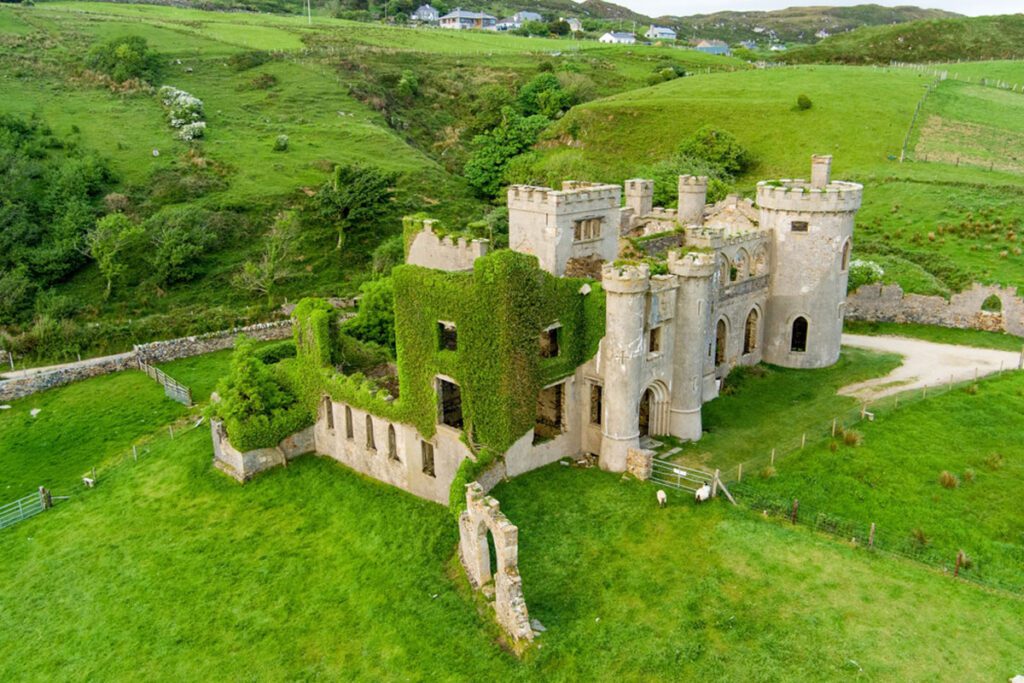
Cultural Richness and Local Traditions
Clifden’s cultural scene is a vibrant tapestry woven with music, art, and community traditions that reflect the heart and soul of Connemara. As a hub for creativity, the town plays host to numerous festivals and events throughout the year that celebrate its unique heritage and artistic spirit.
One of the standout events is the Clifden Arts Festival, held annually in September. This renowned festival attracts artists, writers, and performers from all over Ireland and beyond, transforming the town into a buzzing cultural hub. Visitors can enjoy a diverse program of live music, theater performances, art exhibitions, and literary talks that showcase the best of contemporary and traditional Irish culture.
Traditional Irish music is an integral part of life in Clifden, with many pubs and venues offering live sessions that bring locals and visitors together. The lively melodies of fiddles, flutes, and bodhráns fill the air, creating an authentic and joyous atmosphere. These sessions often invite participation, offering a chance for visitors to immerse themselves in the rich musical heritage of the region.
Local crafts and artisan products also play a significant role in Clifden’s cultural identity. The town is home to a variety of galleries and shops where visitors can find handmade jewelry, pottery, and textiles that reflect the natural beauty of Connemara. These crafts make for unique souvenirs and serve as a testament to the skill and creativity of local artisans.
Community traditions, such as storytelling and folklore, continue to thrive in Clifden. Tales of ancient legends, historical events, and local characters are passed down through generations, preserving the oral history of the area. Guided storytelling walks and cultural tours provide visitors with an opportunity to connect with these traditions and gain deeper insights into the region’s heritage.
Through its festivals, music, crafts, and storytelling, Clifden exudes a cultural richness that enhances its appeal as a destination. The town’s warm and welcoming community ensures that every visitor feels at home, making Clifden not just a place to visit, but a place to experience and cherish.
Outdoor Adventures and Natural Wonders
Clifden serves as a gateway to some of Ireland’s most breathtaking outdoor adventures and natural wonders. The surrounding Connemara region, with its rugged landscapes and diverse ecosystems, offers countless opportunities for exploration, adventure, and relaxation.
The Twelve Bens mountain range, visible from Clifden, is a haven for hikers and climbers. These majestic peaks provide trails for all levels, from gentle walks to challenging ascents. The panoramic views from the summits reveal a patchwork of valleys, lakes, and coastal vistas that make the effort worthwhile.
For those who prefer water-based activities, the nearby Atlantic Ocean and the region’s pristine lakes provide the perfect setting for kayaking, paddleboarding, and fishing. Clifden Bay and the many secluded beaches along the coast offer opportunities for swimming and beachcombing, allowing visitors to reconnect with nature in a serene environment.
Cycling enthusiasts will find joy in exploring the winding roads and trails that crisscross the region. The Derrigimlagh Loop, for instance, combines history and scenery, taking cyclists through the iconic bog landscape while passing landmarks like the Marconi station and Alcock and Brown memorial.
Nature lovers will also appreciate the rich biodiversity of Connemara National Park, located just a short drive from Clifden. This protected area is home to an array of flora and fauna, including wildflowers, red deer, and Connemara ponies. The park offers several walking trails, ranging from easy strolls to more strenuous hikes, all showcasing the region’s natural beauty.
For a truly immersive experience, visitors can join guided eco-tours that provide insights into the region’s geology, ecology, and cultural history. These tours often include opportunities to forage for wild foods, learn about traditional farming practices, and discover the unique features of Connemara’s landscape.
As the sun sets over the Atlantic, Clifden’s natural wonders continue to captivate. The unspoiled night skies of Connemara make it a prime location for stargazing, with minimal light pollution allowing the Milky Way and countless constellations to shine brightly.
Clifden’s blend of outdoor adventures and natural wonders ensures that every visitor leaves with a profound appreciation for the beauty and vitality of this remarkable region. Whether scaling a mountain, paddling along the coast, or simply soaking in the views, the experiences found here are as unforgettable as the landscapes themselves.
Natural Attractions
- The Cliffs of Moher – Iconic cliffs offering breathtaking ocean views and a visitor centre.
- Connemara National Park – A vast park with mountains, bogs, and walking trails, including Diamond Hill.
- The Burren – A unique karst landscape with rare flora and archaeological sites.
- Kylemore Abbey and Victorian Walled Garden – A stunning lakeside abbey with beautiful gardens and history.
- Lough Corrib – Ireland’s largest lake, perfect for fishing, boating, and nature exploration.
Historical and Cultural Sites
- Galway City – Known as the “City of Tribes,” with vibrant streets, medieval walls, and Spanish Arch.
- Dunguaire Castle – A picturesque 16th-century castle near Kinvara, hosting medieval banquets.
- Aughnanure Castle – A 16th-century tower house surrounded by scenic landscapes.
- Clifden Castle – Ruins of a 19th-century castle overlooking Clifden Bay.
- Athenry Heritage Centre – An interactive experience showcasing medieval history.
Beaches and Coastal Attractions
- Salthill Promenade – A bustling seaside promenade with stunning views of Galway Bay.
- Dog’s Bay and Gurteen Bay – Beautiful white-sand beaches near Roundstone.
- Spiddal – A coastal village with traditional craft shops and views of the Aran Islands.
- Inishbofin Island – A remote island with beaches, walking trails, and rich history.
- The Aran Islands – Famous for their cultural heritage, stone forts, and rugged landscapes.
Scenic Drives and Villages
- The Sky Road – A panoramic driving route with stunning views of the coastline and islands.
- Clifden – Known as the “Capital of Connemara,” with boutique shops and local restaurants.
- Roundstone – A charming village popular for its art, crafts, and lively atmosphere.
- Oughterard – A gateway to Connemara and a hub for anglers and hikers.
Unique Experiences
- Galway International Arts Festival – A world-class annual festival featuring music, theatre, and art.
- Trad on the Prom – A spectacular show celebrating traditional Irish music and dance.
- Connemara Marble Visitor Centre – Learn about the history and crafting of Connemara marble.
- Ashford Castle – A luxurious castle hotel offering falconry, horse riding, and boat trips.
- Corrib Princess River Cruise – A relaxing boat tour on the River Corrib with stunning scenery.
County Galway’s blend of rugged landscapes, cultural vibrancy, and historical charm makes it a standout destination for all travelers.
Helpful Resources:




